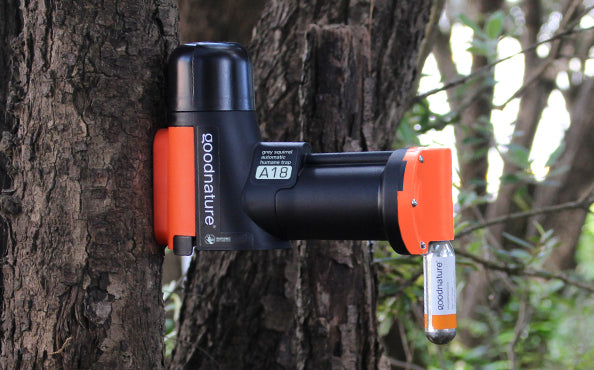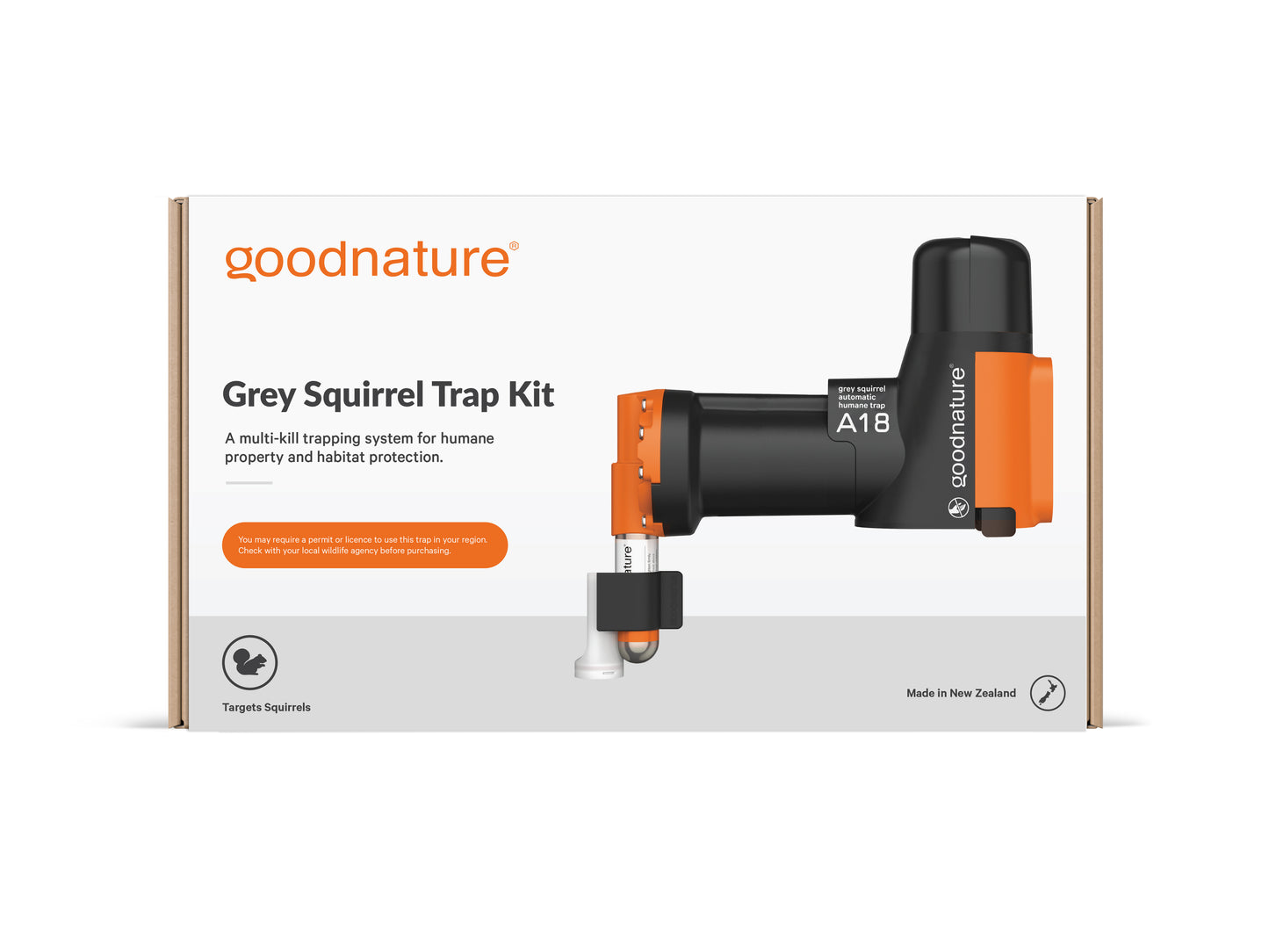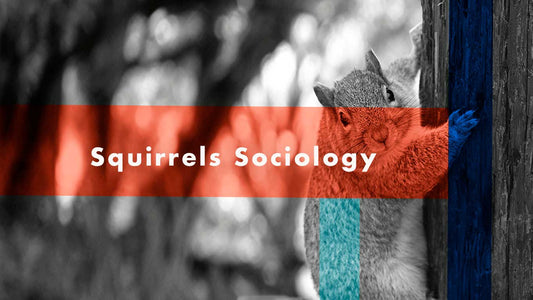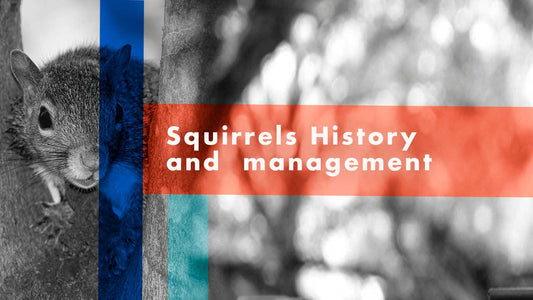In the United States, there are several species of squirrels, including the gray squirrel, fox squirrel, red squirrel, and flying squirrel. While these species may exhibit similarities, they also possess distinct characteristics unique to each type.
One notable aspect of squirrels, in general, is their relatively high reproductive rates, which contribute to their potential as pests.
They exhibit a polygynandrous mating system, wherein both males and females mate with multiple partners, further emphasizing their capacity for population growth and establishment as potential pests. In the following section, we will delve into each squirrel species individually, exploring their taxonomy, physical features, reproductive abilities, and how these factors contribute to their respective tendencies as pests.
Gray Squirrel
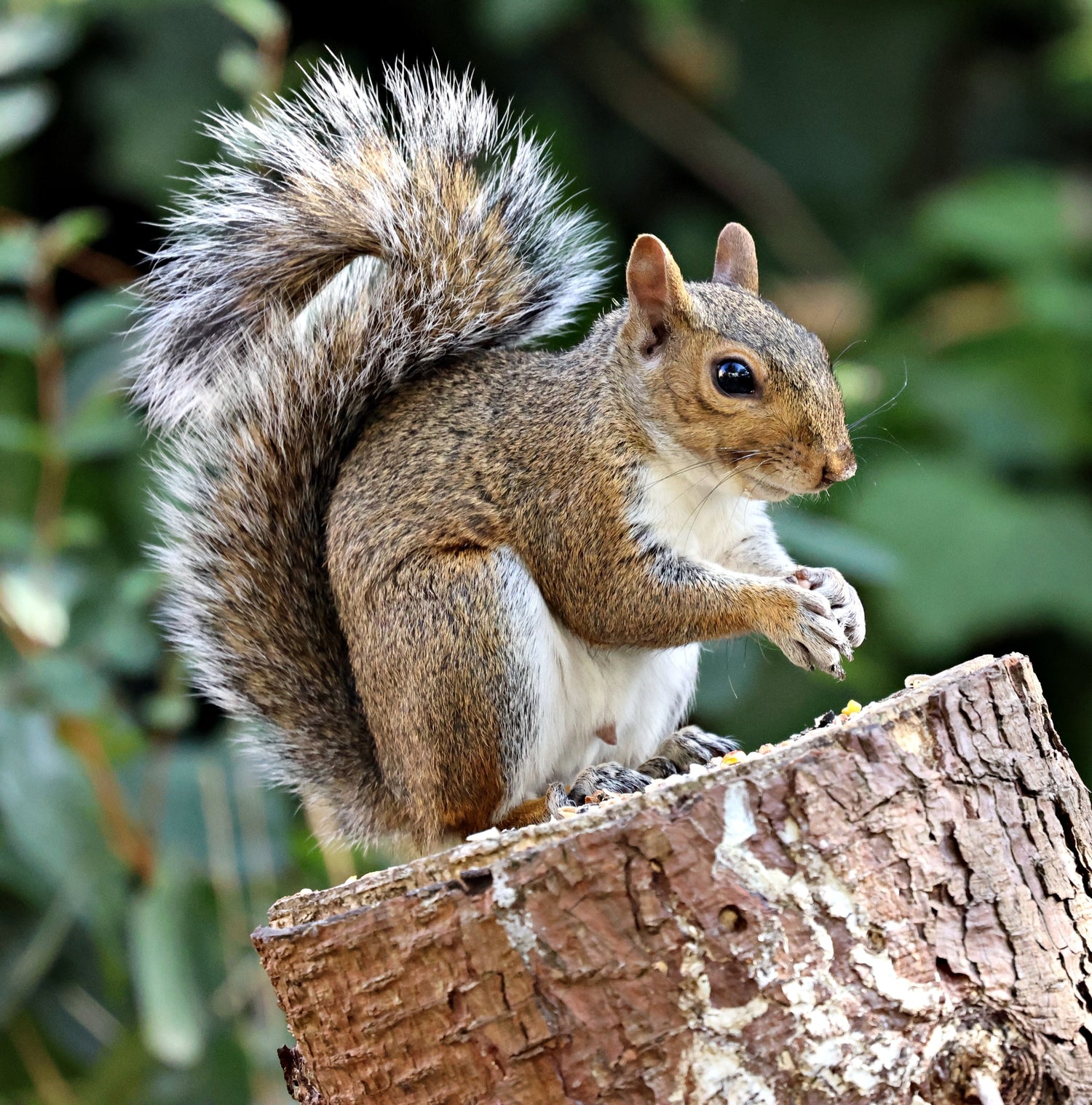
Physical Characteristics:
Gray squirrels have a grayish coat with a white underside. They have a medium-sized body, ranging from 9 to 11 inches (23 to 28 cm), and a long, bushy tail that measures approximately 8 to 10 inches (20 to 25 cm).
Taxonomy:
- Kingdom: Animalia
- Phylum: Chordata
- Class: Mammalia
- Order: Rodentia
- Family: Sciuridae
- Genus: Sciurus
- Species: carolinensis
Reproduction:
They breed twice a year, usually in late winter and mid-summer. The gestation period is around 44 days, and a litter typically consists of 2 to 4 young. They can have multiple litters per year.
Location:
Gray squirrels (Sciurus carolinensis) can be found in a wide range of states across the United States. Their distribution encompasses numerous states including Alabama, Arkansas, Connecticut, Delaware, Florida, Georgia, Illinois, Indiana, Iowa, Kansas, Kentucky, Louisiana, Maine, Maryland, Massachusetts, Michigan, Minnesota, Mississippi, Missouri, Nebraska, New Hampshire, New Jersey, New York, North Carolina, Ohio, Oklahoma, Pennsylvania, Rhode Island, South Carolina, Tennessee, Texas, Vermont, Virginia, West Virginia, and Wisconsin. With their adaptability to various habitats, gray squirrels have established a presence in woodlands, suburban areas, and urban environments throughout their range, making them a common sight across many parts of the country.
Fox Squirrel
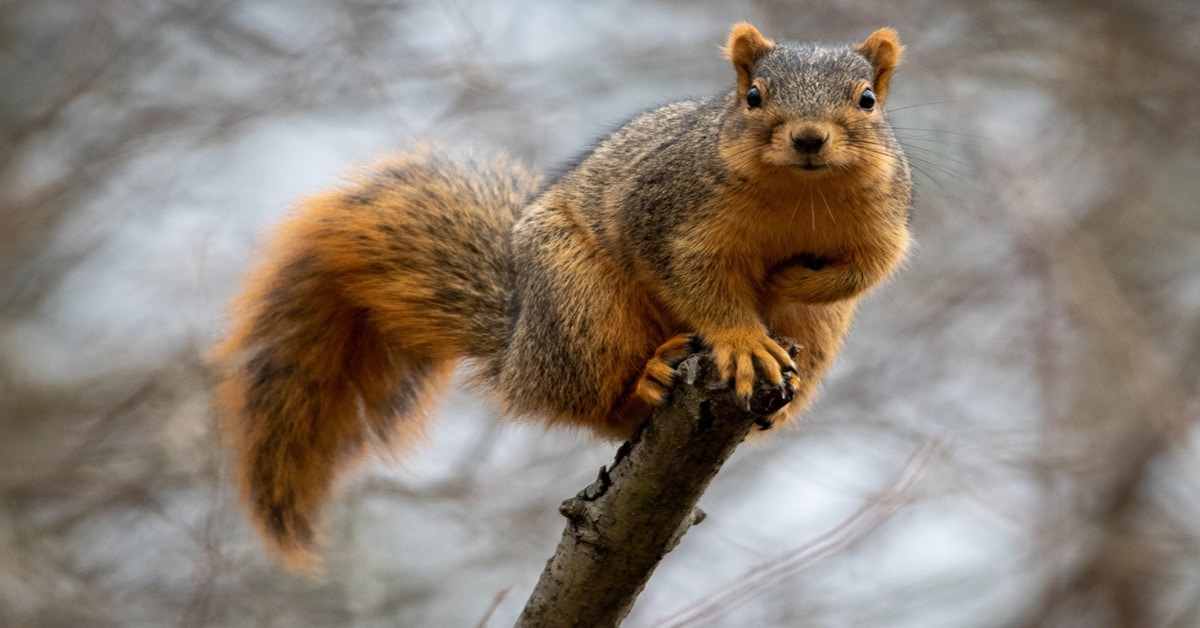
Physical Characteristics:
They are larger than gray squirrels, with an average length ranging from 17 to 27 inches (43 to 69 cm), including their long, bushy tails, which can measure around 8 to 13 inches (20 to 33 cm) in length. Fox squirrels have a robust build and can weigh between 1.5 to 2.5 pounds (0.7 to 1.1 kg). Their fur coloration can vary, including shades of reddish-brown, gray, and black, and they often have a prominent black facial mask with white or gray fur around their eyes and ears.
Taxonomy:
- Kingdom: Animalia
- Phylum: Chordata
- Class: Mammalia
- Order: Rodentia
- Family: Sciuridae
- Genus: Sciurus
- Species: carolinensis
Reproduction:
They breed twice a year, usually in late winter and mid-summer. The gestation period is around 44 days, and a litter typically consists of 2 to 4 young. They can have multiple litters per year.
Location:
Fox squirrels can be found in various states across the central and southeastern United States. These agile climbers are widespread throughout their range, which includes states such as Arkansas, Illinois, Indiana, Iowa, Kansas, Kentucky, Louisiana, Michigan, Minnesota, Mississippi, Missouri, Nebraska, Ohio, Oklahoma, Tennessee, Texas, and Wisconsin. Fox squirrels have adapted to diverse habitats, including hardwood forests and urban parks, making them a common sight in many regions.
Red Squirrel
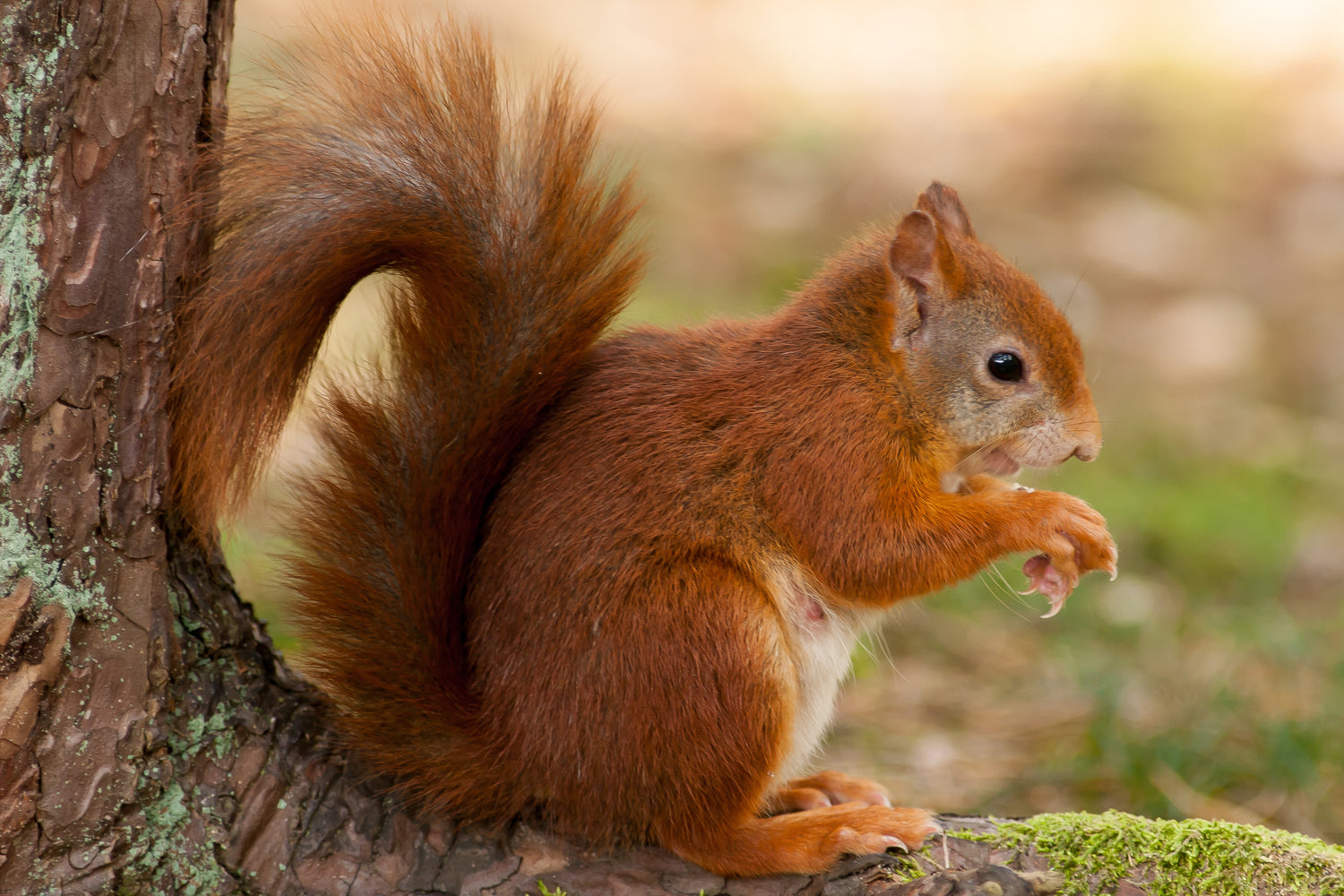
Physical Characteristics:
Red squirrels are smaller than gray and fox squirrels and have reddish-brown fur with a white belly. Measuring around 7 to 8 inches (18 to 20 cm) in length, and a fluffy tail. Red squirrels also have tufts of fur on their ears.
Red squirrels are known for their high-pitched vocalizations and aggressive behavior. They are excellent climbers and have the ability to leap between trees.
Taxonomy:
- Kingdom: Animalia
- Phylum: Chordata
- Class: Mammalia
- Order: Rodentia
- Family: Sciuridae
- Genus: Tamiasciurus
- Species: hudsonicus
Reproduction:
They have a single breeding season in late winter or early spring, typically between February and April. During this time, male red squirrels engage in territorial displays and vocalizations to attract females. The gestation period lasts approximately 35 to 40 days, leading to the birth of litters ranging from 3 to 7 offspring. Female red squirrels provide extensive maternal care, constructing nests called dreys to nurse and protect the young until they are weaned at 8 to 10 weeks old.
Location:
Red squirrels are primarily found in the northern parts of the United States, particularly in regions characterized by boreal forests and coniferous habitats. Common locations where red squirrels can be found include Alaska, Idaho, Maine, Michigan's Upper Peninsula, Minnesota, Montana, New Hampshire, New York (Adirondack and Catskill Mountains), Oregon, Vermont, Washington, and Wisconsin.
Flying Squirrel
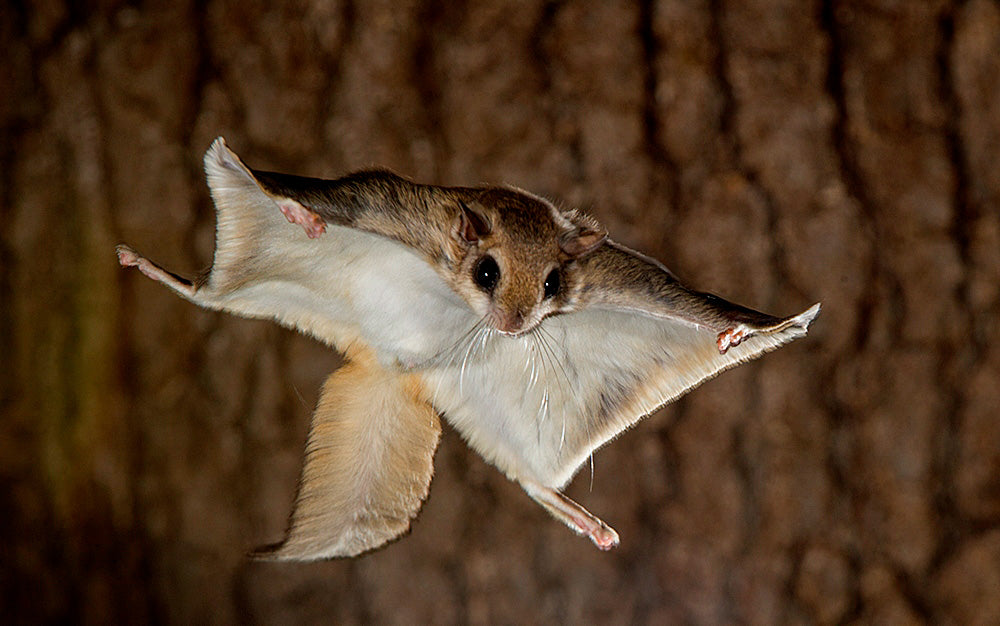
Physical Characteristics:
The United States is home to two species of flying squirrels: the northern flying squirrel (Glaucomys sabrinus) and the southern flying squirrel (Glaucomys volans). Flying squirrels possess specific anatomical characteristics that enable them to glide through the air. Their most prominent feature is the patagium, a membrane of skin that extends between their forelimbs and hindlimbs, allowing them to glide. Their limbs are adapted for gliding, with elongated wrist and ankle bones supporting the patagium. Flying squirrels also have lightweight skeletons with hollow or low-density bones, a flattened tail for stability, large eyes for enhanced nocturnal vision, and sensitive whiskers for navigation.
Taxonomy:
- Kingdom: Animalia
- Phylum: Chordata
- Class: Mammalia
- Order: Rodentia
- Family: Sciuridae
- Subfamily: Sciurinae
- Tribe: Pteromyini
Reproduction:
Flying squirrels have specific characteristics related to their reproduction. They typically have a breeding season, usually during late winter to early spring, although it can vary depending on the species and geographic location. Male flying squirrels engage in courtship behaviors to attract females, such as vocalizations and aerial acrobatics. These squirrels are generally promiscuous, with both males and females mating with multiple partners to increase genetic diversity. The gestation period lasts around 40 to 60 days, and females give birth to litters of usually two to six offspring. Mothers provide maternal care within nests, nursing and protecting their young. Once the juveniles are independent, they develop their flying abilities, utilizing a membrane of skin to glide between trees.
Location:
The northern flying squirrel (Glaucomys sabrinus) is commonly found in states such as Alaska, Washington, Oregon, Idaho, Montana, Wyoming, Minnesota, Wisconsin, Michigan, Maine, New Hampshire, and Vermont. On the other hand, the southern flying squirrel (Glaucomys volans) has a broader distribution and can be found in states including Texas, Oklahoma, Florida, Georgia, Alabama, Tennessee, North Carolina, and Virginia. These states represent key areas where flying squirrels are commonly observed, although their ranges may extend beyond these specific locations.
If you possess specialized knowledge or profound insights that you're currently applying or believe will benefit others, we encourage you to share your expertise with us.
Your valuable wisdom can greatly enrich our community and empower fellow trappers!
Now that you know your target, meet our top squirrel killer!

Automatic Trap Company
A18 Squirrel Trap Kit With Digital Strike Counter
Share


